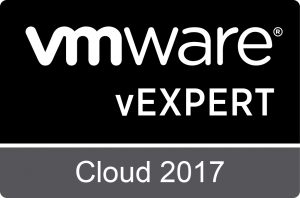 Zadara Storage, a Storage-as-a-Service (STaaS) start-up company, is offering disaster relief to businesses affected by Hurricanes Harvey, Irma, or Maria. The relief Zadara is offering comes in the form of up to 1PB of free data storage for six months. This storage can be installed on-site, in the Cloud, or as a hybrid model.
Zadara Storage, a Storage-as-a-Service (STaaS) start-up company, is offering disaster relief to businesses affected by Hurricanes Harvey, Irma, or Maria. The relief Zadara is offering comes in the form of up to 1PB of free data storage for six months. This storage can be installed on-site, in the Cloud, or as a hybrid model.
(I’m so pleased to be writing about some good news related to the hurricanes that have caused so much destruction in Texas, Florida, and Puerto Rico.)
How do businesses qualify for their six months of free storage?
- Be a business that operates in the hurricane-affected areas and lost storage
- Be a business that operates elsewhere, but lost storage in a data center or at a colocation site in the hurricane affected areas
If your business meets either of these two conditions, you can apply for your free storage here.
I know what you’re thinking — What’s the catch? There is none. If your company qualifies, Zadara will either ship storage — to your site or to your colocation data center — or provide you with access to cloud-based storage in Zadara’s data centers. When the six months is up, you can choose to sign up for Zadara’s Storage-as-a-Service, or you can return the storage to them, no questions asked.
I spoke with Zadara’s CEO and co-founder, Nelson Nahum, last week. He told me that as he was watching news coverage of the hurricane disasters, he and other members of the company’s management team found themselves inspired by things people were doing to help each other: sharing food and resources, working together to rescue people who were trapped, opening their homes to shelter strangers who lost their homes to the storm. Seeing this caused the management team to ask themselves and each other what they could do to help. The answer was: up to 1PB of Storage-as-a-Service for six months, either on-site or in the Cloud, for free, no strings attached.
Zadara’s Storage-as-a-Service supports multiple data types (block, file, and object), providing access via multiple storage protocols (FC, iSCSI, iSER, NFS, SMB, S3, and Swift). (I’ll do a follow-up blog post later to take a closer look at how they accomplish this.)
So, if you’re with a business that could use a hand getting back on its feet following the triple-whammy of hurricanes — or know someone in that situation — go here to have the business apply.



